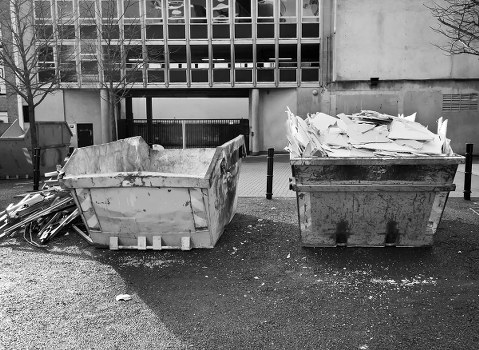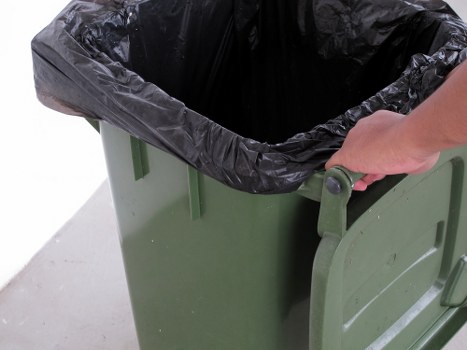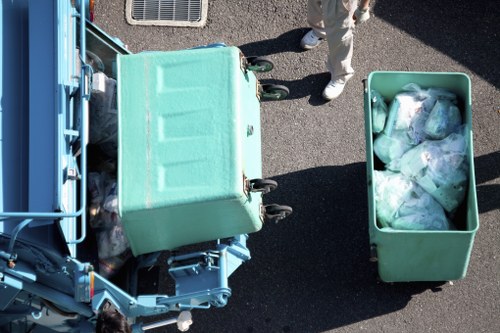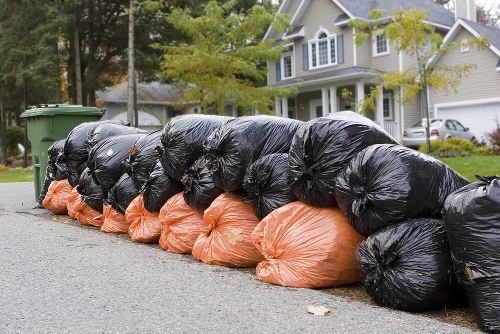Council Large Item Collection Stoke Newington

Dealing with large items like furniture, appliances, or old electronics can be challenging for residents of Stoke Newington. Fortunately, the Council Large Item Collection service is here to help. This service ensures that unwanted bulky items are removed responsibly and efficiently, making your life easier.
Understanding the process is essential to make the most of this service. Whether you're moving homes, renovating, or simply decluttering, knowing how to arrange for a large item collection can save you time and stress.
In this article, we'll explore everything you need to know about the Council Large Item Collection in Stoke Newington, including how to book a collection, what items are eligible, and tips for preparing your items.
How to Book a Large Item Collection

Booking a large item collection with the council is straightforward. Residents of Stoke Newington can schedule a collection by following a few simple steps.
First, visit the official Stoke Newington Council website. Navigate to the waste management section, where you'll find the large item collection service. Here, you'll need to provide details about the items you wish to dispose of and choose a convenient date for the collection.
Alternatively, you can call the council's waste management hotline. Providing accurate information about the size and type of items ensures a smooth collection process.
Eligibility Criteria for Large Item Collection

Not all items qualify for council collection. It's important to know what's eligible to avoid any inconvenience.
Generally, items like old furniture, mattresses, large appliances, and bulky waste can be collected. However, hazardous materials, certain electronics, and items requiring special handling may not be eligible.
Check the council's guidelines to confirm whether your items qualify. Properly categorizing your waste helps in responsible disposal and recycling.
Preparing Your Items for Collection

Proper preparation of your items ensures a swift and efficient collection process.
Start by sorting your items. Separate items that can be recycled from those that need to be disposed of. Disassemble large furniture where possible to make transportation easier.
Secure your items in designated collection areas, such as your driveway or side of the road, ensuring they are easily accessible for the collection team.
Responsible Disposal and Recycling

The council prioritizes responsible disposal and recycling. Ensuring your items are sorted correctly contributes to environmental sustainability.
Furniture and appliances are often repaired or refurbished, extending their lifespan. Recyclable materials like metal, glass, and certain plastics are processed appropriately, reducing landfill waste.
Your participation in sorting and preparing items plays a crucial role in the council’s recycling efforts.
Costs and Fees
Understanding the costs associated with large item collection is important for budgeting.
The Stoke Newington Council often offers large item collection as part of their waste management services. However, certain items or additional collections may incur a fee.
Check the council’s pricing schedule to understand any potential costs. Being informed helps you avoid unexpected expenses.
Benefits of Using Council Collection Services
- Convenience: Easy scheduling and professional collection.
- Environmental Responsibility: Proper recycling and disposal of items.
- Cost-Effective: Often included in council services with minimal or no fees.
- Safety: Professional handlers manage heavy and bulky items.
Local Relevance: Nearby Areas to Stoke Newington
Stoke Newington is surrounded by several vibrant communities, each with its unique characteristics and proximity to the large item collection service.
- Hackney: Just west of Stoke Newington, Hackney offers easy access to the collection services, catering to its diverse population.
- Finsbury Park: Located to the southwest, Finsbury Park residents benefit from timely collection and recycling programs.
- Alexandra Palace: Northeast of Stoke Newington, Alexandra Palace has its own schedules aligning with the council services.
- Stroud Green: Directly south, Stroud Green integrates seamlessly with Stoke Newington's collection system.
- Upper Clapton: East of Stoke Newington, Upper Clapton residents enjoy efficient large item removal.
- Manor House: Northwest, Manor House relies on the same robust collection infrastructure.
- Noel Park: Another nearby area with access to comprehensive waste management services.
- Harringay: Southwest, Harringay residents benefit from accessible large item collections.
- Lower Clapton: Easily connected to Stoke Newington's collection routes.
- Clissold: Close to Stoke Newington, Clissold participates actively in the recycling initiatives.
- Cazenove: Just adjacent, Cazenove enjoys the council's efficient waste collection services.
- Tottenham Hale: Further northeast, Tottenham Hale coordinates with Stoke Newington for large item collections.
- Lower Harringay Efficiently connected, Lower Harringay relies on Stoke Newington's collection system.
- Stamford Hill: Near to Stoke Newington, Stamford Hill benefits from the same waste management services.
Environmental Impact of Large Item Collection
Proper large item collection significantly reduces environmental impact by ensuring items are recycled or disposed of responsibly.
The council's focus on recycling helps minimize landfill use, conserving natural resources and reducing pollution.
Residents contribute to a healthier environment by participating in these collection services, promoting sustainability within the community.
Community Involvement and Awareness
- Educational Programs: Learn about the importance of recycling and responsible disposal.
- Community Events: Participate in local clean-up drives and recycling initiatives.
- Feedback Opportunities: Provide input to the council on improving waste management services.
Challenges and Solutions
Despite the benefits, there are challenges associated with large item collections, such as scheduling conflicts and limited collection windows.
To address these issues, the council continuously strives to optimize collection routes and expand service availability.
Residents can help by adhering to guidelines and providing accurate information during booking, ensuring a smooth and efficient process for everyone.
Future Improvements
The council is committed to enhancing large item collection services by incorporating innovative recycling technologies and expanding community outreach programs.
Continuous feedback from residents helps shape these improvements, making the service more effective and user-friendly.
Staying informed about upcoming changes ensures that residents can take full advantage of the enhanced services.
Frequently Asked Questions
1. What items are eligible for council large item collection?
Eligible items typically include old furniture, large appliances like refrigerators and washing machines, mattresses, and bulky waste. However, hazardous materials and certain electronics may not qualify. It's best to consult the council's guidelines to confirm.
2. Is there a fee for large item collection in Stoke Newington?
Many large item collections are included within the council's waste management services at no extra cost. However, additional collections or specific types of items may incur a fee. Check the council's pricing schedule for detailed information.
3. How often can I schedule a large item collection?
The frequency of large item collections depends on the council's schedule and availability. Typically, residents can book a collection as needed, but it's advisable to plan in advance to ensure timely service.
4. Can I prepare my items for collection myself?
Yes, you can prepare your items by sorting them appropriately, disassembling large furniture if possible, and placing them in the designated collection area. Proper preparation helps the collection team manage and remove items efficiently.
5. What happens to my collected items?
Collected items are processed responsibly by the council. Recyclable materials are sorted and recycled, while items that can be refurbished are repaired and reused. Non-recyclable and non-reusable items are disposed of following environmental regulations.
